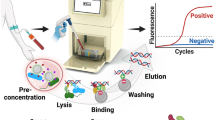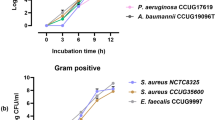Abstract
OBJECTIVE:
The present study assessed the ability of a rapid chemiluminescent DNA probe assay to detect bacterial growth in blood culture specimens before their detection by continuous-monitoring blood culture (CMBC) systems.
STUDY DESIGN:
Three newborn intensive care units, which are members of the National Institute of Child Health and Human Development Neonatal Research Network, participated in this study. Each center employs an automated CMBC system against which the DNA probe was compared. A total of 1700 blood cultures were analyzed. A 3-ml aliquot of culture medium was removed from each culture during early incubation, processed, and analyzed by the DNA probe.
RESULTS:
Of 1700 blood cultures, 130 (7.6%) were detected positive by a CMBC system. Coagulase-negative staphylococci (CNS) were present in 90 (69%) of the positive cultures, and 26 (29%) were detected by the DNA probe. Other organisms accounted for the remaining 40 positive cultures, and 31 (78%) of these were detected by the probe assay. Seventy-six percent of all positive cultures were detected by a CMBC system within 24 hours. Ninety-eight percent of all positive cultures were detected by a CMBC system within 48 hours. Of the two organisms that grew in a CMBC system beyond 48 hours, both were CNS and one of these was considered a contaminant. Therefore, 99% of clinically significant organisms were detected by a CMBC system within 48 hours.
CONCLUSION:
This DNA probe is not sufficiently sensitive to be clinically useful; however, automated CMBC systems are sufficiently sensitive to aid in clinical decision-making regarding the continuance or discontinuance of antibiotic therapy following 48 hours of culture incubation.
This is a preview of subscription content, access via your institution
Access options
Subscribe to this journal
Receive 12 print issues and online access
$259.00 per year
only $21.58 per issue
Buy this article
- Purchase on Springer Link
- Instant access to full article PDF
Prices may be subject to local taxes which are calculated during checkout
Similar content being viewed by others
Author information
Authors and Affiliations
Rights and permissions
About this article
Cite this article
Hertz, D., Fuller, D., Davis, T. et al. Comparison of DNA Probe Technology and Automated Continuous-Monitoring Blood Culture Systems in the Detection of Neonatal Bacteremia. J Perinatol 19, 290–293 (1999). https://doi.org/10.1038/sj.jp.7200156
Published:
Issue Date:
DOI: https://doi.org/10.1038/sj.jp.7200156



